Every day, every employee in every department makes decisions.
Some are big, and some are small.
Without guidelines, these individual decisions are haphazard and sometimes at odds with each other. But it’s possible to ensure that each small action is aligned with the overall goals of your organization.
All you need are business rules.
And you need to implement them in a way that makes your business operations more efficient, not less.
This article introduces business rules, what they are, and how to do them right.
What are business rules?
Business rules are statements that define or restrict the activities of an organization.
Basically, they’re just what they sound like: rules for your business.
They exist to aid decision-making and ensure that the actions of every employee are in line with the overall business strategy. In some cases, they keep the business in compliance with regulations.
Business rules are specific and define individual actions.
“Always provide excellent customer service” isn’t a business rule, it’s a value. “When a customer joins the loyalty program, offer a 10% discount on their first purchase” could be a business rule though.
Business rules have no gray area.
They’re clear about whether an action should be taken or not. This provides employees with clear guidance and saves them the time and effort of figuring out what to do.
What are some examples of business rules?
Business rules can exist in any industry or any part of the business. They can apply to individuals, departments, or the whole organization.
Here are a few examples of possible business rules:
- If a customer spends more than $3,000 in a calendar year, offer a 20% discount on their next purchase.
- An annual performance review must be completed in December for any employee continuously employed by the organization for at least 3 months.
- Property cannot be rented to a tenant with a credit score below 600.
- On website pages for products with a price less than $20, recommend only products that are also less than $20.
Business rules affect the steps of many business processes.
If an HR business rule states that every new employee receives a welcome email, then sending that email needs to be baked into the onboarding workflow.
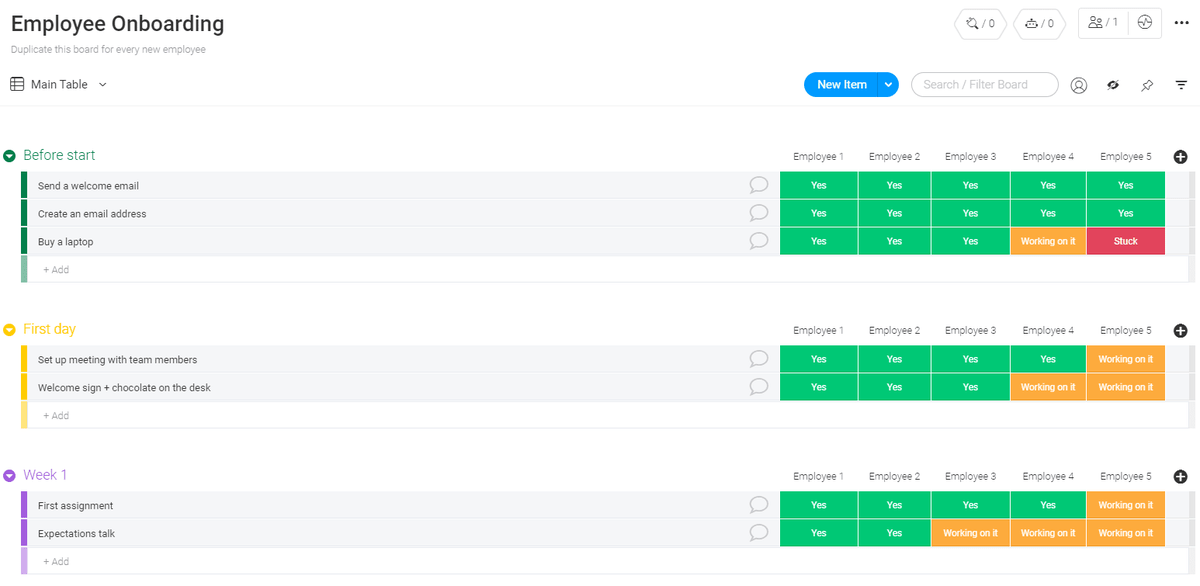
Common types of business rules
Organizations categorize their business rules in a variety of ways.
Regardless of how rules are classified, they all serve the same purpose: defining acceptable business actions. Here are a few common categories of business rules.
Formula rule
A formula business rule defines how to calculate a value, like the price of a product.
Qualification rule
Qualification rules filter which subjects should be included and which ones should not. For example, the rule might say that vendors must be chosen from a particular list.
Timing rule
A timing business rule defines what will happen after a set time period.
For example, a timing business rule could be that if a customer support ticket isn’t resolved within 48 hours, it will be escalated to a higher priority group.
Trigger rule
A trigger rule contains a trigger and an action. If step 1 happens, then step 2 will happen.
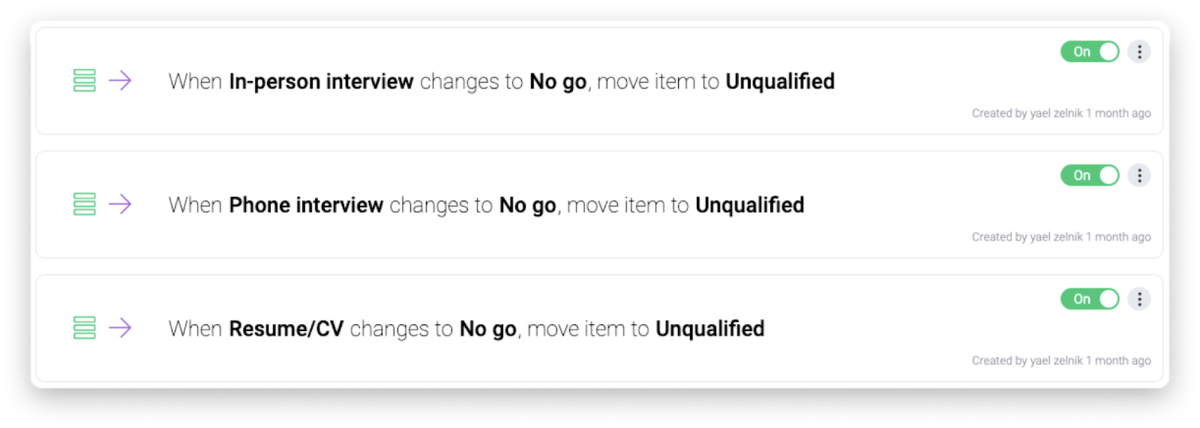
Are business rules important?
Ronald G. Ross writes in Business Rule Concepts: Getting to the Point of Knowledge that “Without any exaggeration, good business rules are no less important to business operations than a robust, finely-tuned nervous system is to the human body.”
But why are they so important? And are there any downsides to having business rules?
Pros of business rules
With well-implemented business rules, processes will be more efficient and employees more productive. There are a few reasons for that:
Decision-making is consistent.
When you have clear business rules, no one can go rogue. The actions of the organization are predictable, which makes it more trustworthy to customers, partners, and employees.
Actions align with strategy.
The average cog in the wheel can’t see what the whole machine is doing. Business rules ensure that every action, no matter how large or small, is working toward the goals of the company.
Clear guidance saves time and improves productivity.
A decision has to be made. There are a number of stakeholders involved.
Here’s one idea: you hash it out in a 2-hour meeting until everyone’s on the same page.
Here’s a better idea: you skip the meeting and follow pre-established business rules. It’s easier to get things done efficiently when you know exactly what to do.
Cons of business rules
When business rules become a negative thing in an organization, it’s usually because of poor implementation.
Business rules are a problem when they’re disorganized, unclear, or involve too much extra manual work.
Consulting business rules takes time.
Ideally, business processes — and the rules that guide them — should be well-known by employees, properly documented, and automated when possible.
But if the business rules are hard to find, or worse, “tribal knowledge” that hasn’t been documented at all, they slow down the process rather than making it more efficient.
Employees spend more than 25% of their time searching for the information they need to do their jobs. Don’t let your organization’s business rules be the thing they’re hunting for.
Changes are hard to implement.
Business rules need to be flexible. Company priorities could shift, team members could change, and regulations or corporate governance could be updated.
In an ideal world, none of that would slow down operations.
Unfortunately, in many companies, business rules are hard to change.
Sometimes that happens because they’re hard-coded into a process. For example, you might have rules dictating dynamic pricing — the price of your products changes daily based on various factors.
Suppose you want to change a few factors in this system, but that will be a big project involving software engineers recreating the whole process. It’s tempting to just stick with the old way.
Other times, change is slow because the rules aren’t properly documented. Employees know them as “the way we’ve always done things,” and it’s hard to spread the word that the workflow has changed.
How to create good business rules
Whether or not you’ve officially documented your business rules, you already have them. Any time you consistently do things a certain way or make a particular decision, that’s a business rule.
But as we discussed, rules should be official and documented. Here’s how you do that effectively.
Find the decision points in your processes
Analyze your existing processes and find the points where a decision has to be made.
This is where you’ll need business rules. Write rules that define each possible scenario and the decision that should be made.
Consider your business goals
Business rules are low-level and granular, but they exist to support company objectives. Each time you write down a business rule, make sure that it has a purpose in line with your overall strategy.
Document everything
Commit every rule to writing. Here are some tips for how to put business rules into words.
Clarity is key.
If 5 people read the same rule, they should interpret it in the same way. When you document your business rules, assume that you have to define even simple terms.This is called your business vocabulary.
Take the word “customer.” Is a customer anyone who has ever spent money at your business or someone who is currently using your services?
Including an example of each business rule in your documentation can help with clarity.
Keep business rules in a central location.
Some companies keep a physical guidebook of business rules. Others use an electronic database.
Whatever method you choose, it’s important that there’s a central repository of business rules.
If an employee needs to check a rule, they should know where to look. There should never be a question about which version of the rules is the most up-to-date. And if a rule needs to be changed, it should be easy to do so.
Maintain rule independence through documentation.
Rule independence means that business rules are separate from business processes.
The 2 are closely related. However, rules apply across all processes and procedures. If a business process changes, your business rules should remain the same, and the same decisions should result.
Rule independence is lost when business rules are used to create processes but not documented separately.
Automate workflows if possible
Remembering and following every business rule is a lot to ask of employees.
Mistakes will be made. Time will be wasted.
Any time you can build an automated workflow to manage a business rule, you help keep work accurate and streamlined.
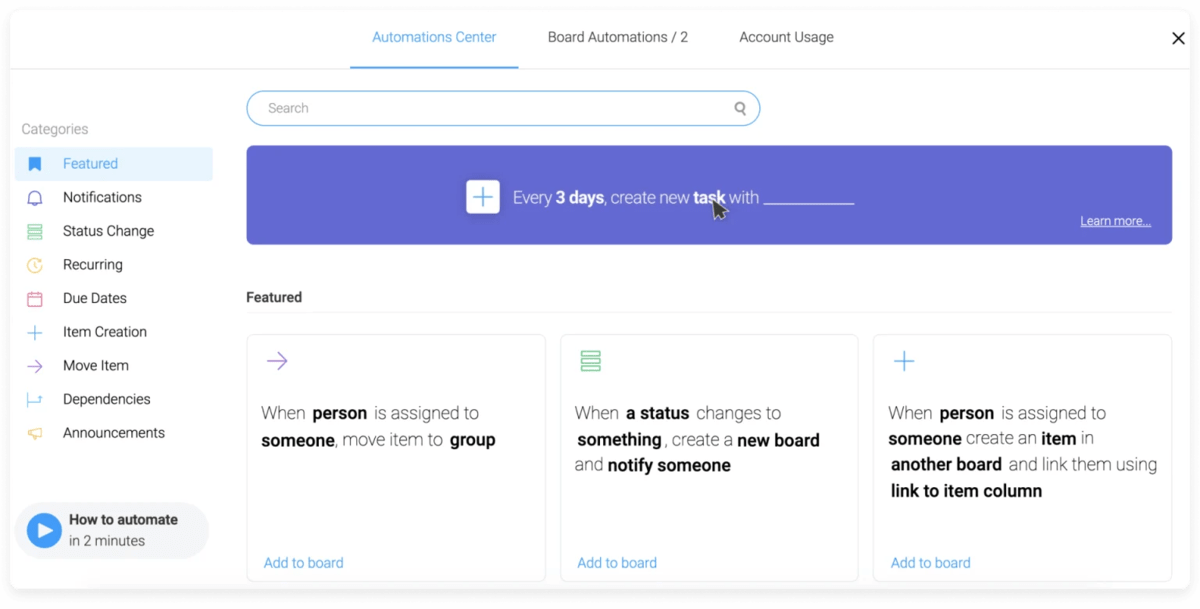
Business rule automation works best when:
- Any business person can understand it. Programmers shouldn’t have to get involved every time a rule is used in a process.
- The automation is easy to edit from an intuitive user interface.
- User permissions are managed. You may want to limit who can change the automation while still allowing others to view and understand it.
How monday.com helps implement business rules
As a versatile Work OS that’s used across the business, monday.com can help you implement business rules in a practical way. Here’s how:
Automate workflows with built-in business rules
monday.com automations could not be easier to set up.
The user interface is intuitive for everyone and uses natural language, just like you’ve used to write your business rules in the first place.
An automation on monday.com has 2 parts: a trigger and an action.
Both the trigger and the action could be anything that happens on a monday.com board. For example, let’s say you’re using the CRM template to manage your in-progress deals.
Your business rule states that when a deal is worth more than $15,000, it’s prioritized above other deals.
The Sales Pipeline board has columns for deal value and priority, so all you have to do is add an automation that says:
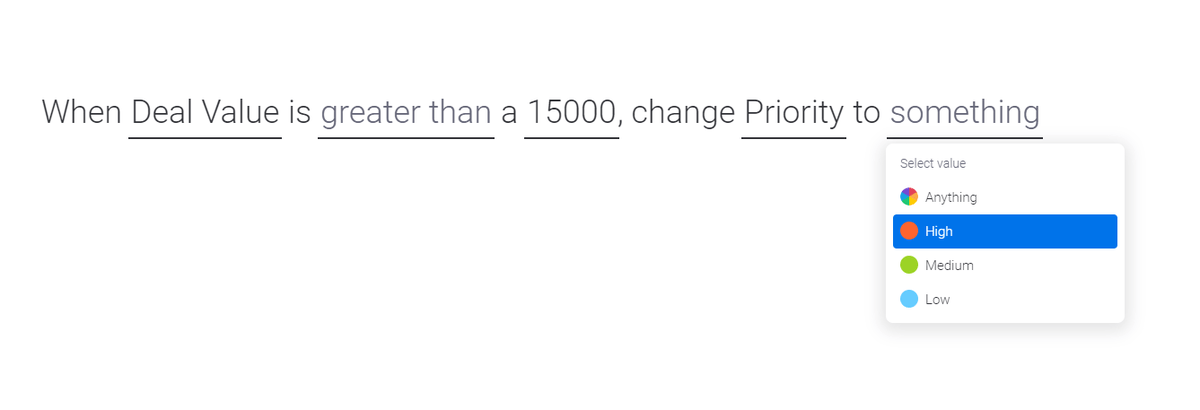
When Deal Value is greater than 15,000, change Priority to High.
Easily manage changes to processes
Decided you want to make the priority threshold $20,000 instead? Or maybe you want to have multiple conditions triggering an action.
You can make those changes with a few keystrokes.

Transfer ownership of business rules
Ownership of your automations can be easily transferred. No information or function will be lost if someone leaves the team or roles change.
Manage business rules for multiple teams from one platform
At monday.com, we’re not a fan of silos.
Using a single platform to power teams across the company helps keep things consistent, efficient, and centralized — just like business rules ought to be.
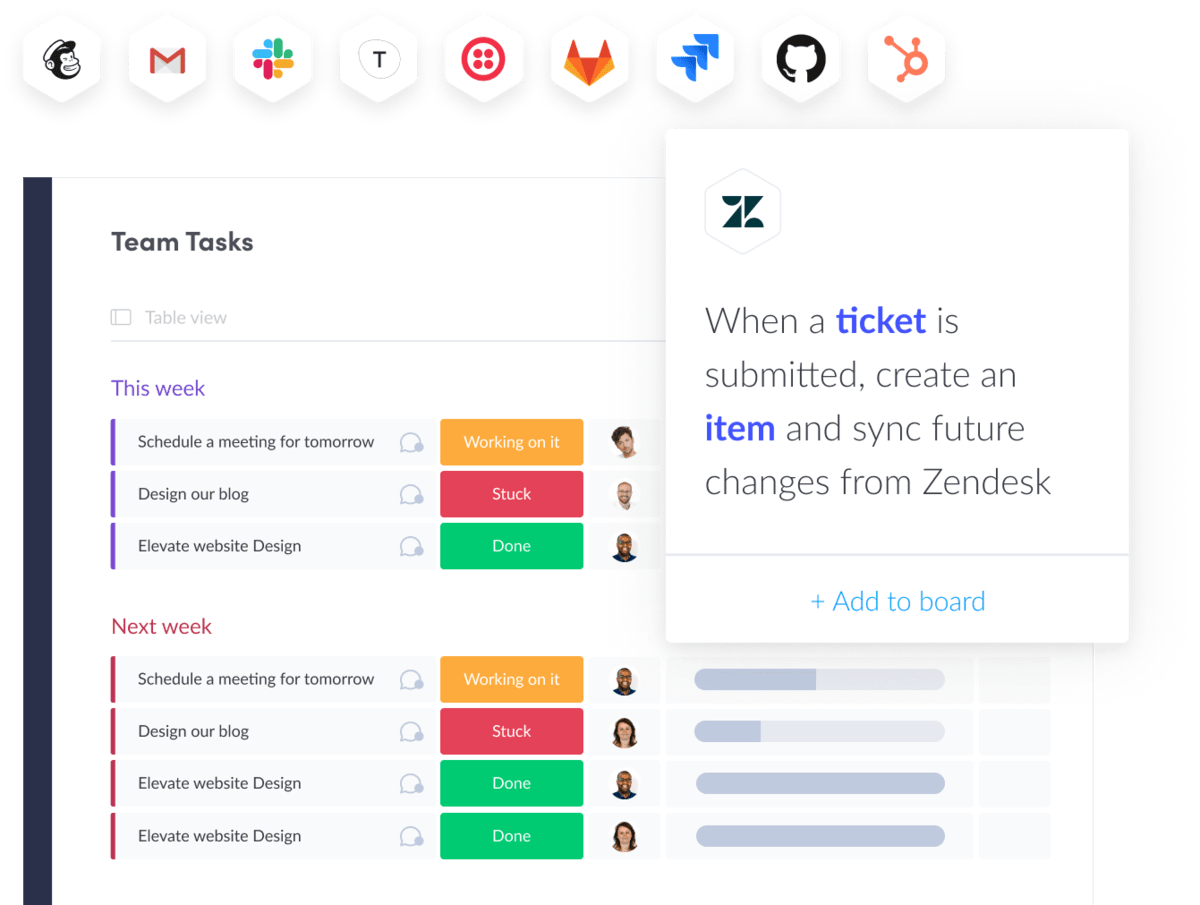
If you have a team overseeing the organization’s business rules, monday.com will give them visibility into rules from HR to accounting.
You could even use a monday.com board to manage documentation of all of your business rules.
Business rules improve decision-making efficiency
Every business has its rules.
Whether they result in streamlined operations or extra work and confusion comes down to how you document and implement the rules.
monday.com has all the qualities that make automating business rules hassle-free: it’s easy to use, easy to edit, and can be used anywhere in the organization.
Business rules automation can be added to any monday.com template or customized board — and anyone can do it.
For a flexible board that can help you put together efficient business processes, try the process management template.

